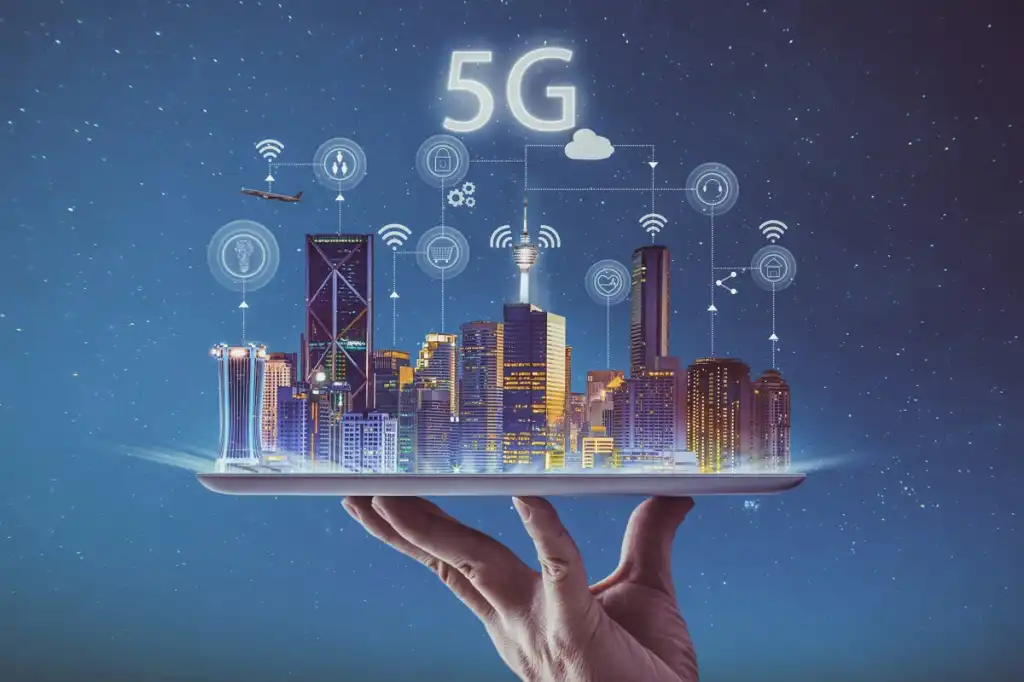
August 13, 2025
How to Code for 5G-Enabled Apps
How to Code for 5G-Enabled Apps
5G technology will revolutionise mobile apps with faster speeds, lower latency, and better connection. 5G lets developers create programs with real-time data processing, smooth streaming, and seamless interaction. Unlike 4G networks, 5G enables mobile applications to send enormous amounts of data and respond instantly, opening up new app development possibilities. Code for 5G-enabled apps and use these developments to create high-performance, real-time apps with this article.
Understanding 5G: What Makes It Different?
5G wireless technology will be a big improvement above 4G. Faster bandwidth, lower latency, and more device connections are available. 5G allows mobile apps to handle more data and give real-time experiences without delays. 5G's speed and low latency enhance AR, streaming, and gaming. 5G networks boost data throughput and app interactions, making user experiences more immersive. Developers can create scalable, real-time applications by optimising for 5G.
Tools and Frameworks for 5G-Optimized App Development
Developers may utilise several frameworks and tools to create 5G applications. Qualcomm and Nokia's 5G SDKs allow developers to use 5G's reduced latency and fast speed. Android's 5G APIs and iOS's Network.framework let developers code for 5G. Unity, a popular platform, simplifies 5G app development for Android and iOS with AR Foundation.
For checking 5G network connection, TelephonyManager is an important Android class. An example of how TelephonyManager can find 5G on Android:
import android.telephony.TelephonyManager;
import android.telephony.CellInfo;
import android.telephony.CellInfoLte;
import android.content.Context;
public class NetworkUtils {
public static boolean is5GEnabled(Context context) {
TelephonyManager telephonyManager = (TelephonyManager) context.getSystemService(Context.TELEPHONY_SERVICE);
for (CellInfo cellInfo : telephonyManager.getAllCellInfo()) {
if (cellInfo instanceof CellInfoLte) {
return true; // LTE (4G/5G) network type
}
}
return false;
}
}
Optimising Apps for 5G Speed and Latency
Mobile applications can share real-time data with 5G's fast download speeds and low latency. Real-time multiplayer gaming, video streaming, and AR/VR apps benefit from 5G networks. Developers should focus on adaptive streaming, which adjusts video quality based on bandwidth, for 5G optimisation.
Apps should use ExoPlayer for video streaming in 5G to manage high data transfer rates and minimal latency. Code for integrating ExoPlayer for seamless streaming in a 5G app:
import com.google.android.exoplayer2.ExoPlayer;
import com.google.android.exoplayer2.SimpleExoPlayer;
import com.google.android.exoplayer2.upstream.DefaultHttpDataSource;
import com.google.android.exoplayer2.source.MediaSource;
import com.google.android.exoplayer2.source.ProgressiveMediaSource;
import com.google.android.exoplayer2.trackselection.DefaultTrackSelector;
import com.google.android.exoplayer2.ui.PlayerView;
public class VideoPlayerActivity extends AppCompatActivity {
private SimpleExoPlayer player;
private PlayerView playerView;
@Override
protected void onCreate(Bundle savedInstanceState) {
super.onCreate(savedInstanceState);
setContentView(R.layout.activity_video_player);
playerView = findViewById(R.id.player_view);
player = new SimpleExoPlayer.Builder(this).build();
playerView.setPlayer(player);
String videoUrl = "https://path_to_high_quality_video.mp4";
MediaSource mediaSource = buildMediaSource(Uri.parse(videoUrl));
player.prepare(mediaSource);
player.setPlayWhenReady(true);
}
private MediaSource buildMediaSource(Uri uri) {
DefaultHttpDataSource.Factory dataSourceFactory = new DefaultHttpDataSource.Factory();
return new ProgressiveMediaSource.Factory(dataSourceFactory).createMediaSource(uri);
}
}
This code optimises 5G video streaming for efficiency.
Implementing Low Latency Features in Your App
Real-time multiplayer gaming and interactive AR/VR applications need 5G's low latency. App developers may reduce user-server distance using edge computing, accelerating data processing and interactions.
In real-time online games, 5G lets players talk to each other instantly. When you want to talk to someone quickly, WebSockets is great. This coding example uses WebSocket for quick multiplayer game communication:
const WebSocket = new WebSocket('wss://your_game_server.com');
WebSocket.onopen = () => {
console.log('Connection established');
};
WebSocket.onmessage = (message) => {
const gameData = JSON.parse(message.data);
updateGameState(gameData); // Update game state with real-time data
};
WebSocket.onerror = (error) => {
console.error('WebSocket Error: ', error);
};WebSockets convey data in real time with little latency, making the user experience smooth.
Maximising Connectivity with IoT and 5G
5G can link more devices with higher data speed and latency for IoT applications. 5G connects IoT devices and applications in real time, making it ideal for smart homes, businesses, and cities.
MQTT, a lightweight messaging protocol, performs well over 5G for real-time IoT connectivity. A basic code example for integrating MQTT into an app to transmit and receive IoT sensor data over 5G:
import mqtt from 'mqtt';
const client = mqtt.connect('wss://your_mqtt_broker.com');
client.on('connect', () => {
client.subscribe('sensor/data', (err) => {
if (!err) {
console.log('Subscribed to sensor data');
}
});
});
client.on('message', (topic, message) => {
console.log('Received data: ' + message.toString());
});
This setup lets your app process real-time IoT data with little delay using 5G.
Security Considerations for 5G Apps
With quicker data throughput and more connected devices, 5G raises security concerns. Protecting sensitive data requires strong security. Apps that handle personal or financial data must encrypt user data.
For safe contact, encrypt data with TLS or SSL. 5G apps should have MFA and OAuth2 added to them for extra safety. Setting up HTTPS for safe data transfer using code:
import javax.net.ssl.HttpsURLConnection;
import java.net.URL;
public class SecureConnection {
public static void connectToServer() throws Exception {
URL url = new URL("https://secure-api.example.com");
HttpsURLConnection connection = (HttpsURLConnection) url.openConnection();
connection.setRequestMethod("GET");
connection.setSSLSocketFactory(SSLContext.getDefault().getSocketFactory());
connection.connect();
}
}
Conclusion
5G's faster speeds, lower delay, and better connection are good for app developers. 5G tuning lets app makers make fast apps for streaming video, data, games, and the internet of things (IoT). As 5G networks come online, greater demand for apps that work better will lead to new ideas.
548 views
